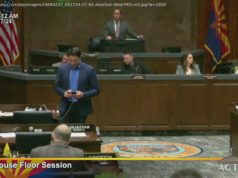It is a major victory for Democrats who charged that the 18 districts were unconstitutionally gerrymandered to benefit Republicans.
Pennsylvania’s highest court added its voice Monday to a growing chorus of federal and state judges that have struck down election maps drawn to help the political party in power.
In this case, it was the congressional map designed by Republican state legislators that the state Supreme Court said “plainly and palpably violates the Constitution of the Commonwealth of Pennsylvania.” The judges demanded new maps by Feb. 15 and threatened to design their own if state officials do not comply.
The order, with an opinion to follow soon, comes just two weeks after a federal judge in North Carolina struck down that state’s equally partisan maps. The U. S. Supreme Court temporarily blocked that ruling while it considers similar complaints from Wisconsin and Maryland.
The confluence of challenges and court rulings concerning so-called partisan gerrymandering raises the political stakes on the eve of the 2018 midterm elections, when Republican control of Congress and many state legislatures is up for grabs.
The U. S. Supreme Court has been considering the Wisconsin challenge to state Assembly districts since hearing oral arguments in early October. It is scheduled to hear a challenge to one Maryland congressional district this spring. The court’s decisions could affect other states as well.
The Pennsylvania decision could throw congressional elections there into chaos, since all 18 districts — including 13 controlled by Republicans — now must be redesigned.
Two Republican justices in Pennsylvania, along with one Democrat, dissented from the state Supreme Court’s 4-3 order because they wanted to wait for guidance from the U. S. Supreme Court in the Wisconsin case.
Pennsylvania’s congressional district lines also are being challenged in federal court in a process that could lead to the U. S. Supreme Court. By contrast, the state Supreme Court ruling may escape the high court’s review, although state officials said they would ask the justices to put the ruling on hold.
“The U. S. Supreme Court doesn’t get to tell a state’s highest court what is state law,” said Stanton Jones, an attorney for opponents of the Republican congressional maps. “The U. S. Supreme Court has nothing to say about that.”
Although Pennsylvania is closely divided between Democrats and Republicans, maps drawn by the GOP in 2011 resulted in a 13-5 Republican edge in the state’s congressional delegation. Similarly partisan maps produced a 10-3 GOP advantage in North Carolina, 12-4 in Ohio and 9-5 in Michigan.
The Pennsylvania map was possible because Republicans win the GOP districts with an average of 59%, while Democrats win theirs with an average of 77%. In that way, the challengers’ lawsuit claimed, the legislature “packed” Democratic voters into some districts and “cracked” them among the others.






